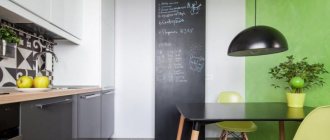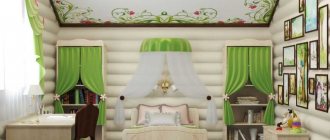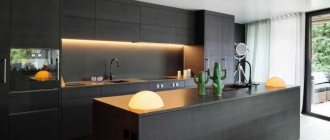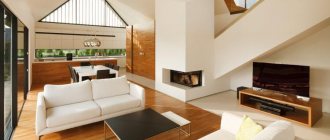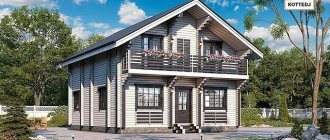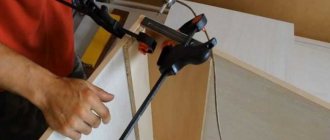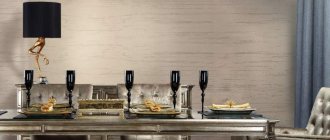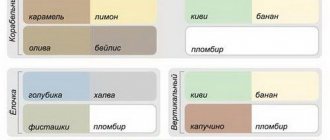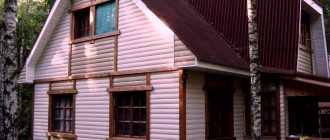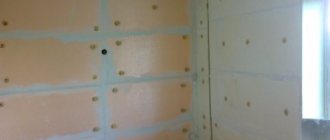Bark beetle / Fur coat / Lamb - a type of decorative plaster that is used to decorate the facade of a house. Today this method is very popular, so we can often notice buildings whose walls have an abstract design. So what is the difference in the names of essentially the same façade, cladding material? In fact, only in the surface texture of the external walls after application.
BARK BEETLE
FUR COAT
LAMB
Application of decorative bark beetle plaster
To apply the bark beetle, use a spatula or grater. Please note: the thickness of the putty layer should not be greater than the size of the granules contained in the bark beetle. The plaster should be spread over a small area so that it hardens faster.
It is recommended that two people do the work: one person applies the plaster, and the second applies the decorative pattern.
This is especially important when the wall has a large area. Be sure to remove excess and uneven material. After the finishing is completed, we move on to the grouting process.
Features of bark beetle plaster
Today the construction market offers us 2 types of manufactured plaster:
- Based on gypsum.
- Acrylic based.
The gypsum composition is prepared before starting work. To prepare the working mixture, you only need two components: water and additional dyes. The expiration date and recipe are indicated on the outside of the package.
Bark beetle façade plaster combines perfectly with foam concrete blocks and bricks when finishing the work area.
The acrylic composition of the mixture is sold ready for use. The pasty mass is sold in special, often plastic, containers. The mixture consists of acrylic, silicone, natural stone particles and color additives.
Silicone gives the mixture plasticity. The thickness of the grooves that appear on the working surface of the facade depends on the size of the stone fractions.
When finishing the facade of a private house with bark beetle plaster, at the final stage of work, pay attention to the thickness of the grooves, they should be 1.5-3.5 mm, no more.
Using this particular version of plaster, you can be sure that over time, cracks will not appear on the facade. Mold and/or mildew will not appear.
Another important point. If you plan to buy a large amount of material, it is important to check that the product belongs to the same batch: pay attention to the label.
Wall decoration with decorative plaster of the “lamb” type, photo of the facade of the house
Finishing the facade of a house with decorative lamb plaster is an excellent way to embellish the facade of a house. There is quite a large number of technologies, so the developer may not be limited to one design solution. Lamb plaster is considered the most practical building material, which allows you to protect walls from moisture, cold, and create excellent sound insulation. The unusual name of this type of lining is due to its external resemblance to lamb fur. The mortar particles are formed using a trowel. As a result, the surface becomes embossed.
This format is in wide demand today due to its durability and immunity to environmental conditions. Forming pellets from plaster on the facade is an excellent replacement for the usual “fur coat”, which we can still remember from Soviet times.
The material adheres well to the wall surface and is durable. The high performance qualities of the “lamb” are complemented by aesthetics. The frozen relief surface is then covered with a layer of paint.
A more laconic and at the same time creative option would be to cover the facade with textured plaster. The exterior of the house will acquire a solid, attractive design. The user has the opportunity to give the uncured plaster any design. As a result, it is possible to cover the surface of the plaster with any palette of colors at the discretion of the author.
Technology of applying decorative bark beetle plaster to the facade
The technology for applying bark beetle plaster to the facade involves the use of a construction tool such as a metal spatula. One of the main conditions for high-quality processing of the external surface is the thickness of the layer. The process of applying plaster to the facade is similar to putty technology.
the solution is stretched along the wall until small grooves appear.
To give the mixture a spiral texture, use a plastic grater to make circular movements. There is no need to apply much force, just a light pressure is enough. The pattern of the bark beetle plaster for the facade will completely open when the solution dries.
Next, using a plastic float you need to polish the working area of the facade. It is important to monitor the uniformity of the pattern, work carefully, and do not rush. Therefore, process control is mandatory: the solution should not stick to the working tool. At the end of the façade finishing work, it is necessary to sand the joints.
Preparing the surface for application
The preparatory process must be treated carefully. First, the facade is sealed with cement or gypsum mortar. Experts recommend working using beacons. The distance is approximately 100-150 millimeters.
Defects in the screed can be corrected with a float or trowel. After which it is necessary to give the mixture time to harden. This can take up to four hours. Finishing the facade with bark beetle at the next stage involves rubbing the surface in a circular motion. If the quality is not satisfactory or obvious defects remain, the procedure can be repeated after 24 hours.
When carrying out work in summer, it is necessary to take into account that the mixture sets quickly. To avoid cracking of the plaster, it must be periodically moistened with water.
In your work you can use different insulation materials such as:
In this case, an adhesive solution is applied to the above material. The top is reinforced with façade mesh. And the bark beetle will appear on top.
How to apply lamb correctly?
Textured lamb plaster requires preliminary cleaning and leveling of the wall surface. Also, the layer of gray plaster should be covered with white or the same color as the outer decorative layer. This is necessary so that there is no dark gap.
Here you can see a photo selection of decorative plaster - finishing the facades of houses, photo decorative plaster. Mosaic plaster has nothing to do with small pieces of tiles that form a single composition. The mortar is replaced by a mass of small granules in different colors.
Advantages of finishing the facade of a building with bark beetle
Finishing the façade of a house with bark beetle implies high mechanical strength. There are no environmental issues.
- The bark beetle has high vapor permeability.
- It is resistant to the harmful effects of external aggressive environments.
- Equally suitable for exterior and interior use.
- Does not crack when dry.
- Fits well on foam concrete.
Positive qualities include its fire resistance, the ability to resist the formation of mold and the appearance of fungus on the facade.
Painting a bark beetle, a lamb, a fur coat in two colors: photo options
The facade can be made either in a single-color format or in a combination of granules of several colors. Externally, finishing work makes the wall seem soft and attractive. You just want to touch the surface of the facade, which has some elasticity. In addition, the material is very resistant to damage, has great variety and excellent aesthetics.
Imitation of natural stone is also possible using plaster. This style of cladding takes its name from the travertine stone type, which has a marbled, veiny structure. Externally, the facade may appear to have a slightly unfinished surface in different places. This creates an imitation of untreated natural stone.
Also, manually using a level or ruler, you can give a linear pattern to a surface that has not yet hardened. This will allow you to recreate the outline of the square/rectangular stonework.
Applying “fur coat” type plaster to the facade of a house: photo examples
To apply the coat correctly, you must first prepare the wall surface and smooth out any uneven surfaces. High-quality plaster is the key to the success of further work. It must be made from a mixture of cement and sand and have a good adhesion index for reliable fastening of the decorative fur coat.
When taking measurements of the wall plane, you need to check its differences. If the indicator does not exceed 0.5 mm per sq. mm, then beacons may not be installed during plastering. For large deviations in the plane of the walls, it is necessary to use a fur coat with a larger fraction - 10 mm or more.
If you need to place a fur coat on a specific place on the facade, make a decorative design, or form façade protrusions, you must first complete these elements using a plastering solution.
To do this, it is not necessary to make an entire pedestal, and the decorative cladding is placed on specific areas of the facade, which are limited by slats.
The fur coat itself is a textured surface, so the plaster does not need to be treated with a construction trowel. Only when leveling the facade from unevenness is it necessary to perform rubbing.
Once the walls are completely ready for applying plaster, you can begin preparing the finishing mortar.
It is prepared in the proportion: one part cement to three parts sand chips. The larger the fraction of the solution, the thicker it will be.
Remember: the thicker the consistency of the plaster, the larger the splashes it will form.
You can choose a method convenient for yourself: Spreading the building mass with a broom or stick. Spreading the solution with a net.
Applying a decorative fur coat using a special machine, which simplifies the entire process and makes it perfect.
It is possible to use a compressor.
ORIGINAL FINISHING OF THE FAÇADE OF A PRIVATE HOUSE WITH PLASTER AND STUCTURE
One of the main features of modern finishing of a private and any other building is dozens of original techniques that are actively used by specialists. The choice of a specific method depends on several factors: finances, architectural features of the structure, personal preferences of the client.
Finishing the facade of a house with bark beetle plaster
Recently, finishing with bark beetle plaster has become very popular. And all because this method does not require special financial costs or the presence of expensive equipment. The result is an excellent building with original aesthetics. Its structure resembles tree bark, which was “processed” by the famous bark beetle. You can look at the facades of one-story houses in photos. The bark beetle looks very attractive here. And besides, it has excellent thermal insulation characteristics.
Finishing the facade of a house with decorative plaster
But not only the bark beetle is known to Ukrainians. They are also actively used in decorative plaster (acrylic, silicate, silicone), polystyrene foam, sandwich panels, siding, artificial and natural stone and many other materials.
Facades of private houses: the best photos of finishing and cladding
The beautiful facades of private houses are presented in our photo gallery with their best examples.
An original combination of colors, the use of not only one material, but also a combination of several techniques - all this will encourage you to new experiments.
Beautiful facades of private houses with unique decoration
The photos of beautiful house facades are distinguished by a wide variety. Here you can find high-tech designs, classic styles like Provence or chalet, industrial style (especially typical for modern private houses), as well as ethnic motifs and many others.
Photos of the best house facades are presented in each of the listed styles. Having examined each of them, you already have a rough idea of what you want the future finish to look like.
Some will prefer to clad the house in a restrained and very attractive Provence style, while others will prefer bold high-tech solutions.
Painting plays an important role in cladding. The main thing is that all the colors matched each other.
The best option is to make the facade from several shades of the same color. Or trust bold experiments - for example, an orange roof and a white facade.
House facade: finishing options in photo examples
You can also watch how they make the facade of a house with their own hands. The photos offer several options from modern craftsmen who were not afraid to handle the facing work themselves.
Finishing the facades of houses, photos of which we bring to your attention, is a popular trend today not only to insulate a home, but also to make it more attractive from the outside. There are a huge number of options for modern cladding, including a variety of materials and styles. We will focus on some of the most popular ones.
If we talk about the most popular and inexpensive options today, we can highlight the most relevant method today - decorative plaster.
This option is the most popular. The basis is taken from materials of various “origins” - innovative silicone plasters, waterproof, acrylic, silicate and many others. This decoration of house facades (decorative plaster in the photo) has a number of undeniable advantages.
Firstly, this material has very good thermal insulation qualities. Warmth in the house is maintained even in the harshest winter. Secondly, it is a moisture-resistant material that does not deteriorate during rainfall or wet weather. Therefore, the durability of such a façade is guaranteed for several years.
Thirdly, if you are interested in decorating the facade of a house with your own hands (you can also look at photos of such options), then it should be said that this material is the easiest to use and does not require special skills or a large amount of equipment. And the choice of colors, shades, and different textures of plaster is simply huge. You can choose any shade of any color at your own discretion.
One of the varieties of plaster for decorating facades is bark beetle. This material is named after a famous beetle that eats tree bark. After such a “lunch”, small holes, various tubercles, and irregularities remain on the bark. This is exactly what bark beetle plaster looks like in this picture.
This type of finishing of home facades with decorative plaster (photos attached) has very good aesthetic advantages. It looks stylish and modern. The bark beetle is in no way inferior in quality to acrylic or silicate plaster materials.
There is another option, similar to the previous one, but with some differences - this is cladding the facades with fur coats. A special plaster mixture is also used here, but the end result is a more “convex”, relief pattern. Many people like this particular façade structure.
Material basis.
Can be applied to different surfaces. And this is also its undeniable advantage over some other options for facade or interior decoration. Bark beetle plaster works well on concrete, plasterboard, brick, and polystyrene boards. It can be used to finish sandwich panels.
But it is better not to use it for metal, plastic, smooth glass and wood. It won't last. In order to lay flat and last as long as possible, you should first cover the base with a base - plaster prepared using cement or gypsum.
The point is that this is the final stage. Therefore, it is not worth covering up various depressions and cracks with it - appropriate materials are suitable for this.
